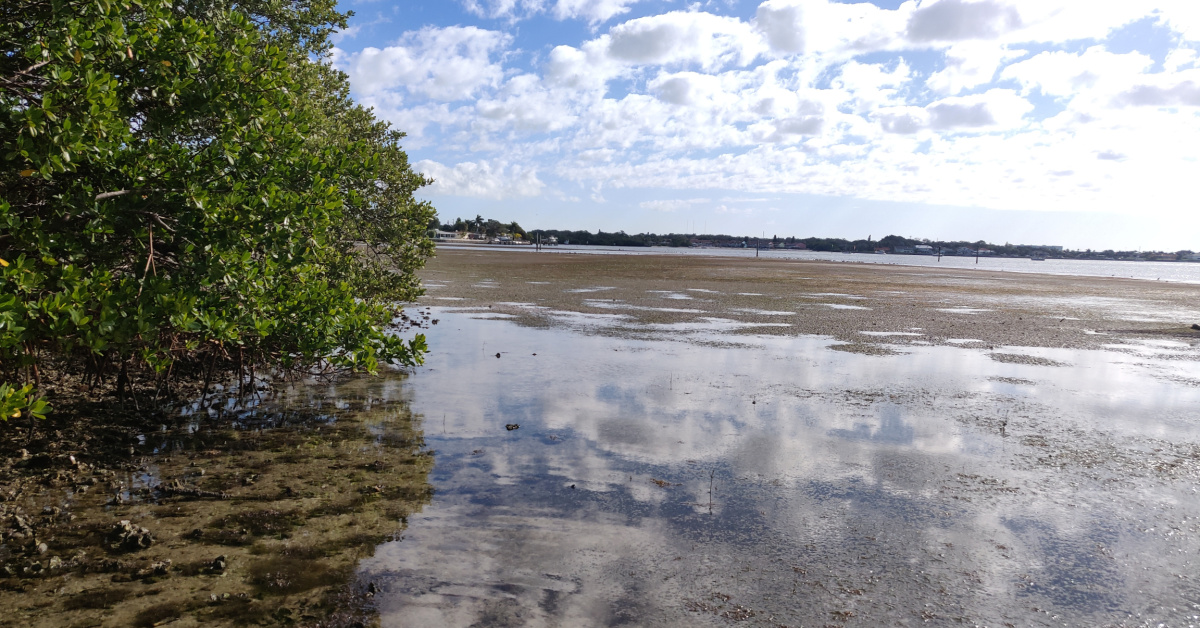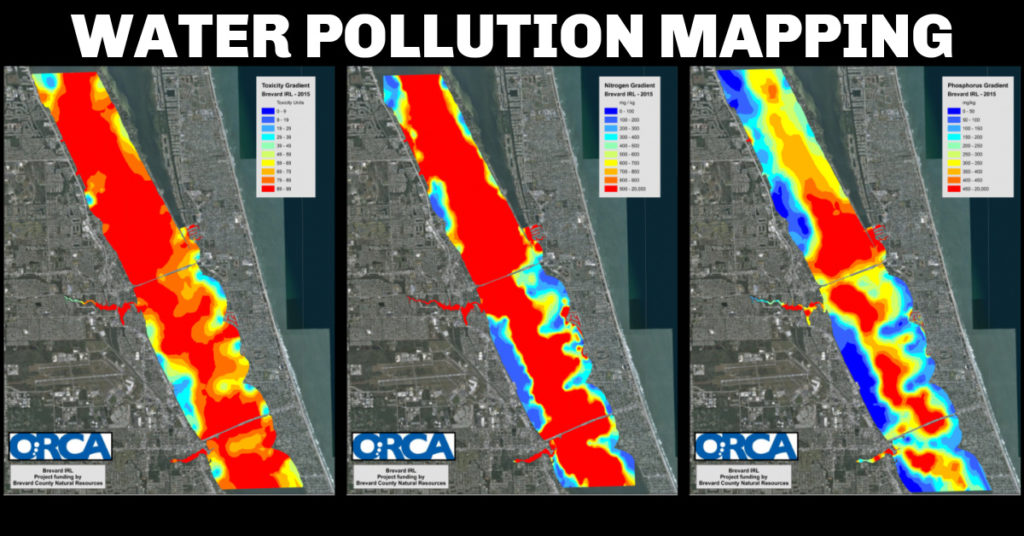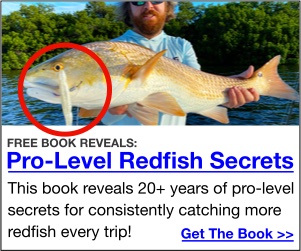What Could Be Causing The Seagrass To Die Off?
- By: Joseph Simonds
- on
- Found In: Fishing Tips, Conservation, Conservation, Weekly Newsletter: 3-20-22

What could be causing all of the seagrass to constantly die off?
Are there ways we can get involved and promote healthy seagrass growth?
In this episode, we discuss what has been happening to our seagrass along with why and what has to change to make a significant impact on our ecosystems!
Are you currently aware of this issue?
We’ve got it all covered below!
You can watch the video version of this podcast below (which I highly recommend), listen to the audio version by clicking the play button underneath it, or listen to it on iTunes, Stitcher, or Spotify.
P.S. Don’t forget to subscribe on iTunes, Stitcher, or Spotify and leave us a review!
Check it all out below!!!

What Is Causing The Seagrass To Die Off? [PODCAST]
Note: Don’t forget to subscribe to the Salt Strong podcast on iTunes, Stitcher, or Spotify and leave us a review!

Related Podcasts:
- USING POLLUTION MAPPING TO SAVE THE INDIAN RIVER LAGOON
- WHAT IF YOU THREW BACK 100% OF THE FISH YOU CAUGHT FOR A YEAR?
Here is a timestamped version:
- 3:03 – Team ORCA’s Mission
- 3:37 – Water Pollution Mapping
- 4:21 – Luke’s Example
- 7:48 – The TRUTH to storm drain runoff
- 8:42 – Driveway cleaning chemicals
- 14:19 – Front and backyard chemical runoff
- 15:04 – Cleaning without harsh chemicals
- 16:11 – Do your own investigations
- 17:51 – Build-up of black muck
- 22:20 – We want YOUR feedback!!
- 23:17 – What is killing all of the seagrass?
[optin-monster slug=”wcrcrc7d6ih5k29wooi4″ followrules=”true”]
What Is Causing The Seagrass To Die Off? [VIDEO]


Conclusion

Healthy seagrass equals a healthy ecosystem of sea life and marine animals.
The responsibility falls onto all of us as anglers, boaters, and human beings to hold accountability and remain mindful of the types of chemicals we expose to our environments.
No matter if you live close to the water or far inland, be mindful of the harsh chemicals you or others are exposing to the environment to sustain our world for generations to come.
Do you have any ideas, feedback, or comments on what is causing the seagrass to die off?
Let us know down below!!
And if you know someone who wants to learn more about what is causing the seagrass to die, please TAG or SHARE this with them!
P.S. Want access to our best fishing spots and tips, plus discounts to our online tackle store? Click here to join us in the Insider Club!
Related Articles:
Related categories:
STOP WASTING TIME ON THE WATER!
Do what the “SMART ANGLERS” are doing and join the Insider Club.
Here’s what you’ll receive today when you join:
- Weekly fishing reports and TRENDS revealing exactly where you should fish ever trip
- Weekly “spot dissection” videos that walk you through all the best spots in your area
- Exclusive fishing tips from the PROS you can’t find anywhere else
- Everything you need to start catching fish more consistently (regardless if you fish out of a boat, kayak, or land).
STOP WASTING TIME ON THE WATER!
Do what the “SMART ANGLERS” are doing and join the Insider Club.
Here’s what you’ll receive today when you join:
- Weekly fishing reports and TRENDS revealing exactly where you should fish every trip
- Weekly “spot dissection” videos that walk you through all the best spots in your area
- Exclusive fishing tips from the PROS you can’t find anywhere else
- Everything you need to start catching fish more consistently (regardless if you fish out of a boat, kayak, or land).














As part of the concerted over all efforts to improve the IRL water quality, the introduction of an artificial fresh tidal flow would also help the situation. Short of cutting a new small inlet, this could easily be handled by a pumping station up in the north end of the lagoon and would not need to be run year round. In regard to what SS can do to help with the day to day public education, perhaps a new SS T-shirt and Hoodie could be considered with the appropriate anti chemical graphics that convey the message. Captains for Clean Water has done a very nice job with theirs. Maybe we need one to promote the message on a national basis as well, not just for Florida. Other states have these chemical issues too.
statewide ban on lawn fertilizers & herbicides. Ban st augustine grass. Provide tax break on property taxes or incentive to xeric scape your yard. Quota on new residents per year who would also have to meet certain criteria to move here. Extreme measures must be taken population growth is not slowing down and will only continue to ruin our state.
Some chemicals may kill seagrass directly and your tips are good ones. However, per FWC, phytoplankton blooms driven by excess nutrients is the most significant factor, and given the scale of the issue, that makes sense.
Yes, wash your car/boat over grass. Mulch mow your yards or bag the clippings; blow the excess clippings on the street back into your yard, not down the drain. But fertilizer, septic systems, and agricultural runoff are all really big deals. All those required retention ponds in the developments since the 1980’s have been really important. But they don’t exist in the older canal communities and these lower circulation estuaries are more delicate; once you lose the seagrass (and the ability to process some of the nutrients), it’s tough to get it back. Anything that reduces light penetration will limit seagrasses and when you get a mucky, organic, substrate constantly working against you, it is a lengthy and expensive repair. Look at the phosphorous issues in the Harris chain of lakes…
dave h
I’ve been guiding and fishing the waters of Tampa Bay for over 30 years now. I grew up on Davis Islands and fished every part of the bay from the Hillsborough River, which used to be Snook City to the piers of Fort DeSoto.
As a kid, most times I would opt for being dropped off at the piers on Fort DeSoto because I didn’t want to go with my parents offshore. They would pull the boat around and I would catch them bait with my large cast nets. Some days there were times I would have to have other men help me lift the net, usually an 8 footer, to get it over the railing, and many times, some of the best fishing I ever saw, was when the net was solid 6-inch Spanish Sardines. As you know, those days are gone and I blame the fisheries regulators for that. I also remember when the commercial netters crashed that fishery upon reaching their 9 million (pounds or something) numbers. IMHO, the Spanish Sardine was the fish candy of all baits back in those days.
I also got to see the crash of the Bayport/Homosassa Tarpon fishery. Funny (being facetious) the afternoon runs on an outgoing tide back to the Weekie Wachee river were predominantly sewage smelling events. For that fishery crash, I blame the loss of the aquifer which was at half-flow of 70 million gallons down from 140 when I stopped fishing Tarpon seasons up there approximately 10-12 years ago. I would also blame the commercial shrimp overfishing that exponentially increased offshore.
So really, most of these problems seem to be multi-pronged events. Homosassa decreased amount of freshwater from the 4 main rivers and septic tank runoff to the large Tarpon’s vacation and destination paradise. And Tampa Bay, yard and septic tank runoff, municipality sanitation releases by the tens and hundreds of thousands of gallons.
To finish, I must say though that in the last 30 years I have never seen as much seagrass destruction as has happened with and since the Piney Point release of 215 million gallons of polluted wastewater and the subsequent murder of the southern part of Tampa Bay, especially around Fort DeSoto, in and around the Skyway area.
And one last thing, please join Captains For Clean Water at https://captainsforcleanwater.org/ and also do a little homework to vote environmentally friendly politicians into YOUR government.
From cape coral. I have lived on a saltwater canal for eleven years now. When we first moved here, I could catch and release a variety of fish from my dock. For the last five or six years that has virtually fallen of to nothing. Like every where else the building boon has been insane especially for canal front lots. Two years ago they where every where, now you can not find an empty salt canal. Florida waters and wild life are doomed to overpopulation. How do you stop that? Good job with your article.
High Springs Florida here. All of our storm drainage flows into the Santa Fe River which flows into the Suwannee River. Drives me crazy these tank trucks spraying fertilizer, insect control and herbicides. They spray the entire yard, doesn’t matter if it needs it or not, once every month and when they are done, they plant a nice little sign that says, do not let children or pets walk on the lawn for 3 or 4 days. Okay, that right there tells me the stuff they are spraying is pretty toxic. And what doesn’t soak into the ground heads right to the river. In this part of Florida, we have hundreds of springs that are filling with green alga. Experts contribute this growth to over fertilization. Where does the spring water come from? The aquafer. I’m no expert, but I am a thinker, this tells me all of these poisons and fertilizers soak into the ground are going right into the aquafer. And where does Florida get most of its drinking water? Yep. Now, if you ask the guy driving the tank truck, he’ll tell you it’s all perfectly legal. And he’s right. So how do we stop it? Homeowners need to use a little common sense and stop worrying what the neighbors think about their lawn.
Non point source pollution! Too much fertilizer on our lawns, that horrid St. Augustine grass requires tons of H20 and fertilizer. That’s why Lake Tarpon is the most polluted body of fresh water in Florida. Pet waste also adds lots of Nitrogen to our waterways. Check out Roof OX for cleaning roof or even driveway. It uses hydrogen peroxide instead of Chlorine or bleach. Plant natives and ban seawalls. Tampa Bay the 3rd most polluted body of salt water in America. Aside from the idea of external poison making it into our estuaries our causeways have inhibited water flow to allow our bays to flush out naturally. Check out FANN for Native planting ideas requiring less fertilizer and less water.
Rob
About Native Yards LLC
Good job sharing these observations SALT STRONG. Your comments are spot on. Unless we heed the advice that you have shared, we will continue to unknowingly contribute to degrading our waterways with contaminated run-off. This generally accepted practice potentially contributes to seagrass die-off destroying aquatic habitat and ultimately our fisheries. Sharing our concerns and our experience on the water is critical to pursuing science-based solutions. As anglers committed to preserving the very thing we love, we have skin in this game. Stay SALT STRONG!
Yes I’m extremely lucky to not have to worry about that here in northeast FL where I live and fish you guys and gals on the gulf side always have problems with seagrass as well as algae blooms and red rides we here donot and I pity you all it’s sad thing that could be fixed if the government really cared but we all know it’s all about the money and politics one bureaucrat says yea the other says ney because it’s to exspensive or even worse comes up with some half a@! Plan that we know wont work only to say that they are working on it but they are not I read fl sportsman mag and the editors are constantly writing about how the big sugar and others always get there way and still pollute the St Lucie river and lake okachobbie also the fertilizer runoff doesnt help either and as far as seagrass that’s just another item that’s suffering from the pollution and thats why I believe more dies off each year if central and south fl wouldn’t get so many red tides and algae blooms maybe the grass would have time to recover but only time and correct environmental conservation will tell sad very sad😔